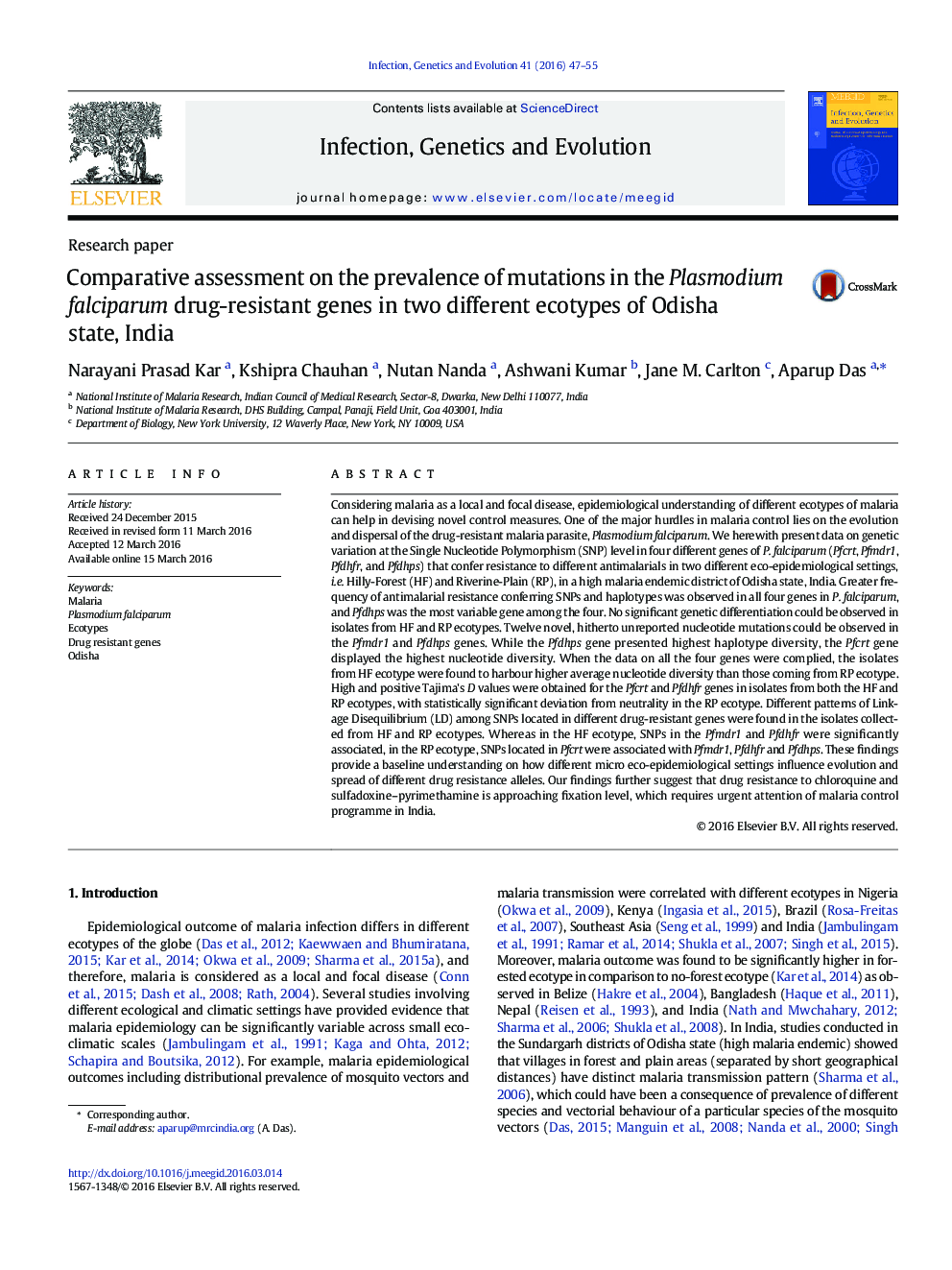| Article ID | Journal | Published Year | Pages | File Type |
|---|---|---|---|---|
| 2822896 | Infection, Genetics and Evolution | 2016 | 9 Pages |
•Variations in genes conferring drug-resistance in micro eco-epidemiological settings in malaria are not known•We performed SNP analyses in four different drug-resistant genes in P. falciparum form two different ecotypes•No significant genetic differentiation between the two ecotypes could be observed•More cases of genetic linkage between different drug-resistant genes were evident in Riverine-Plain ecosystem
Considering malaria as a local and focal disease, epidemiological understanding of different ecotypes of malaria can help in devising novel control measures. One of the major hurdles in malaria control lies on the evolution and dispersal of the drug-resistant malaria parasite, Plasmodium falciparum. We herewith present data on genetic variation at the Single Nucleotide Polymorphism (SNP) level in four different genes of P. falciparum (Pfcrt, Pfmdr1, Pfdhfr, and Pfdhps) that confer resistance to different antimalarials in two different eco-epidemiological settings, i.e. Hilly-Forest (HF) and Riverine-Plain (RP), in a high malaria endemic district of Odisha state, India. Greater frequency of antimalarial resistance conferring SNPs and haplotypes was observed in all four genes in P. falciparum, and Pfdhps was the most variable gene among the four. No significant genetic differentiation could be observed in isolates from HF and RP ecotypes. Twelve novel, hitherto unreported nucleotide mutations could be observed in the Pfmdr1 and Pfdhps genes. While the Pfdhps gene presented highest haplotype diversity, the Pfcrt gene displayed the highest nucleotide diversity. When the data on all the four genes were complied, the isolates from HF ecotype were found to harbour higher average nucleotide diversity than those coming from RP ecotype. High and positive Tajima's D values were obtained for the Pfcrt and Pfdhfr genes in isolates from both the HF and RP ecotypes, with statistically significant deviation from neutrality in the RP ecotype. Different patterns of Linkage Disequilibrium (LD) among SNPs located in different drug-resistant genes were found in the isolates collected from HF and RP ecotypes. Whereas in the HF ecotype, SNPs in the Pfmdr1 and Pfdhfr were significantly associated, in the RP ecotype, SNPs located in Pfcrt were associated with Pfmdr1, Pfdhfr and Pfdhps. These findings provide a baseline understanding on how different micro eco-epidemiological settings influence evolution and spread of different drug resistance alleles. Our findings further suggest that drug resistance to chloroquine and sulfadoxine–pyrimethamine is approaching fixation level, which requires urgent attention of malaria control programme in India.
